The Habit Of Forgiveness: How To Forgive
THE HABIT OF FORGIVENESS: HOW TO FORGIVE WHEN IT SEEMS IMPOSSIBLE, 7 WAYS (ISSUE 109)
By Diane Gold
“Forgiveness is to set a prisoner free, and to realize the prisoner was you.”
This quote is associated with Lewis B. Smedes, author of The Art Of Forgiving. It is also associated with Corrie ten Boom, author and Dutch protector of Jews and resistance workers during World War II. When Corrie, who was imprisoned for hiding Jews and those who didn’t support the Nazi way, came face to face with one of her captors, she walked the walk of forgiveness. She and one of her former concentration camp guards came face to face. They held hands, and she forgave his acts, according to review of her book, which mentions that, in her experience, those who are able to forgive are best able to rebuild their lives.
 Forgiveness author, Smedes, quotes,
Forgiveness author, Smedes, quotes,
“Forgiving does not erase the bitter past. A healed memory is not a deleted memory. Instead, forgiving what we cannot forget creates a new way to remember. We change the memory of our past into a hope for our future.”
This is the way habit change works. We don’t get rid of it; we replace it with a new action and reward.
THE CUE
All of us have experienced hurt, whether it is a small trauma in our lives or an unspeakable wound that is life changing. We always attach the event to a person or people involved. If that person or group had not hurt us, we would not be hurt.
Being hurt is the cue that triggers our action.
THE ACTION
In many cases, we are led to defensive behavior. For small infractions in our lives, we may cry, stomp our feet or laugh it off. For larger, more devastating experiences, we may go to a support person or group. Whatever action we take leads to a reward of some kind.
THE REWARD
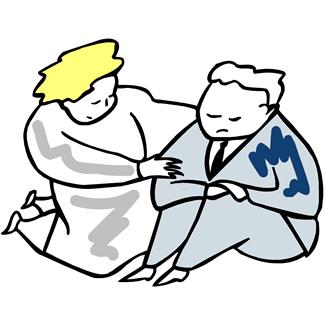
The reward we experience from crying is relief from the outlet. Same with stomping our feet. These behaviors help us cope. We may have a moment of patting ourselves on the head through crying or foot stomping. When we laugh something off, we are experiencing the joy of living and being able to deal well with discomfort. Not always possible.
For larger events, being supported by others leads to being able to cope with a situation. Coping is our reward.
ACTION AFTER TRIVIAL HURT
Here’s a good place to mention that trivia is in the eyes of the beholder. If we think we have been wronged, then we act in a way to get comfort. What is trivial to you may be traumatic to me.
I am reminded of one of my neighbors who often holds on to the spats she has with local merchants. When she feels violated by the merchant, her action is to talk about the experience at length and to announce that she will no longer patronize the merchant. This leads her to her reward, getting recognition for her plight and for personal grandeur.
With any trivial hurt, people act timidly, angrily or in a tempered manner.
ACTION AFTER IMMEASURABLE HURT
Once we are hurt in a life changing way, we still act timidly, angrily or in a tempered manner. We probably reach out for support which brings us the reward of lessening the pain.
UNDERLYING OUR HURT
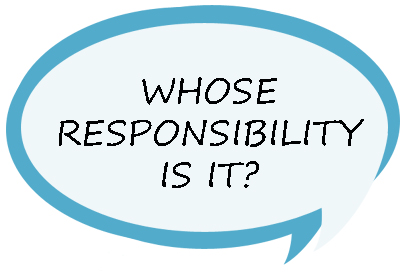 As we all know, we feel more than one thing at once, such as anger and vulnerability or happiness and confidence. Next to these emotions, we place responsibility for our being hurt on someone; often we put it on ourselves. Other times, we put it on the person or group who created the hurtful situation.
As we all know, we feel more than one thing at once, such as anger and vulnerability or happiness and confidence. Next to these emotions, we place responsibility for our being hurt on someone; often we put it on ourselves. Other times, we put it on the person or group who created the hurtful situation.
When this underlying responsibility lingers, and it usually does, we are blaming someone. This is part of the reward phase when we blame others. It helps us cope. It is reverse reward when we blame ourselves.
Either way, that’s where developing the habit of forgiveness comes in.
DEVELOPING THE HABIT OF FORGIVENESS
There are 3 scenarios when we were hurt:
1) it was our fault.
2) it was someone else’s fault.
3) it was no one’s fault.
In the first 2 scenarios, the forgiveness habit can move mountains. People do religious rituals, go to forgiveness classes, go to support sessions, read forgiveness books, all in order to learn to forgive. These avenues are fabulous. Every one of them develops a new pattern of action when we feel hurt, just like the way we develop or change any other habit. And just like with any other habit, we have to replace the old habit for the new one to be currently accessible.
WHY FORGIVENESS?
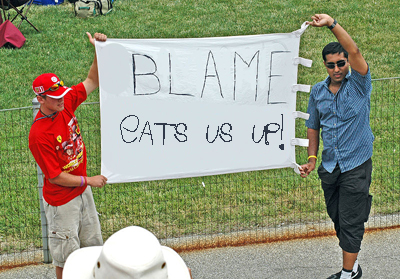 The reason it’s so important to forgive is because blame eats us up. We may think that if we mortally hurt the responsible person, we will be healed. This is one of our baser instincts that is worth looking at. It’s not legal to wound someone, so it’s not a solution. It’s not moral to wound someone. It’s not wise to stoop to the bad behaviors of others. This is where forgiveness comes in.
The reason it’s so important to forgive is because blame eats us up. We may think that if we mortally hurt the responsible person, we will be healed. This is one of our baser instincts that is worth looking at. It’s not legal to wound someone, so it’s not a solution. It’s not moral to wound someone. It’s not wise to stoop to the bad behaviors of others. This is where forgiveness comes in.
HOW TO FORGIVE?
How to forgive? We must develop it.
People have always thought of me as a forgiving and understanding person. They have not seen me in the face of being assaulted, having family members hurt, being cheated out of money, having a car accident because of a drunk driver. Fortunately for me and mine, I have not had to experience all of these atrocities, although some have crossed my path. I don’t feel cool, calm and collected when I am hurt. But, I do have certain methods of dealing with forgiveness that I will share.
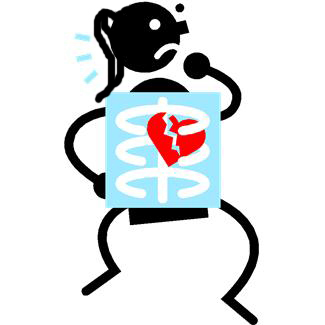 When people lash out and hurt us, they are insecure, self-absorbed, immature, impatient, fearful and hurt from a broken heart. They have become this way because someone has taken a part of their life, and they have not been able to forgive it. Do they always know it? No. In the odd cases where this is not the case, the individual is usually broken in some other way.
When people lash out and hurt us, they are insecure, self-absorbed, immature, impatient, fearful and hurt from a broken heart. They have become this way because someone has taken a part of their life, and they have not been able to forgive it. Do they always know it? No. In the odd cases where this is not the case, the individual is usually broken in some other way.
Every time we get hurt, we must look at how ethical we have become, how much we have grown as humans. Even if we have had a bad day every day of our lives, someone has had it worse. If we have 4 limbs, we’re ahead. If we went to school, we’re ahead. If we have a toilet, running water and have seen a doctor, we’re ahead.
Just because others are in worse shape is not going to develop forgiveness in us. However, this concept can prepare us for new action.
The hardest thing to forgive is when someone hurts our child. It is unthinkable that we could ever forgive this. Deep hurt might be 50 years old, and we still sit with it. Does it help if we sit in anger, torment and vengeful scheming? No. We are probably shortening our lives. And, yes, this feels like the right thing to be doing. Because we have let this behavior develop.
WHAT IF?
H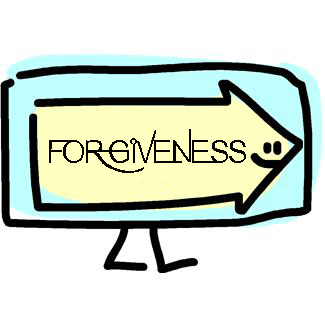 ere are some action steps that may lead us to begin the path of forgiveness. It is not impossible, no matter what it feels like. It’s like any other habit that requires a starting point and constant repetition. In the spirit of any holiday that may have to do with forgiveness, these action steps may be surprisingly useful.
ere are some action steps that may lead us to begin the path of forgiveness. It is not impossible, no matter what it feels like. It’s like any other habit that requires a starting point and constant repetition. In the spirit of any holiday that may have to do with forgiveness, these action steps may be surprisingly useful.
ACTION STEPS
These steps are based upon our tendency to forgive someone who shows remorse. Even though the person who hurt us may not show it, and this lack of it can conjure feelings of revenge in each of us, these steps take us one step back in the life of the hurter who is still acting out revenge from the day she was hurt, in the first place. So the remorse is the acting out.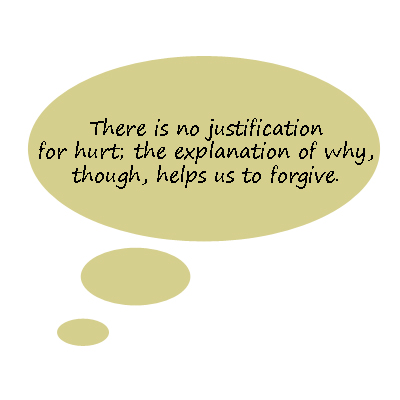
There is no justification for hurt; the explanation of why, though, helps us to forgive.
1) When someone hurts you or your family member, think of the person as an abused child. Even if it is not specifically the case, in some way, it very definitely is the case. Take that thought action immediately. It will calm you down and allow you to help yourself forgive a person like that. Realize that you would make allowances for a child who had been hurt in such a manner.
Or
2) When someone hurts you or your family member, think of the person as the victim of someone who stole her limb at an early age. Even if it is not specifically the case, in some way, it very definitely is the case. Take that thought action immediately. It will calm you down and allow you to help yourself forgive a person like that. Realize that you would make allowances for a child who had been hurt in such a manner.
Or
3) When someone hurts you or your family member, realize that the person feels as small as a small crawling insect. Otherwise, the person would not take liberties with someone else’s life. It is not too difficult to forgive someone like this, especially someone who may have been made to feel this way all her life.
Or
4) When someone hurts you or your family member, picture the hurter as having just experienced the same, exact hurt. Think of how surprised this person must have been and consider that it’s your responsibility to act well.
And
5) When someone hurts you or your family member, join a group of people who have also experienced the same hurt. Type in your type of hurt followed by the word group in your favorite search engine or card catalog. Many groups await you.
And
6) When someone hurts you or your family member, watch this trailer and decide if you want to watch the movie. It depicts The Parents Circle Families Forum’s group of bereaved Palestinians and Israelis, all of whom had a family member killed by the other side. http://www.youtube.com/watch?v=RzJkBxQC4Tg
And
7) When someone hurts you or your family member, realize that every negative thought or action we have or take creates negativity for the world. Likewise, every positive thought or action we have or take impacts the world in a positive manner. Consider choosing the positive road in the name of those who were hurt (including yourself) for the sake of the evolution of morality.
CONCLUSION
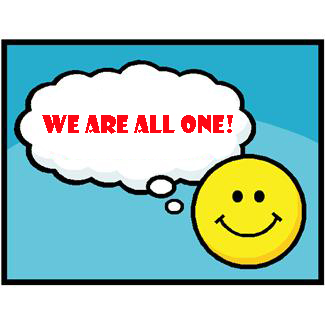
I believe that we are all one, that all energy falls into one big vat with all the positive and all the negative thoughts, emotions, actions. Therefore, the more goodness we bring, the more goodness there will be. Forgiveness is part of this pot. The more we contribute to it, the richer and more beautiful our civilization will become.

Happy Forgiveness Season. May we develop the habit of forgiveness and be the shining examples we all need.
![]()
FEEDBACK
Please leave a comment and LIKE.
DIANE GOLD, AUTHOR
Diane Gold, Founder of Warriors of Weight, Turning Habits Into Health, is a mentor in tai chi, kung fu and meditation, a music, fitness and stress expert, dedicated mom, studying plant-based nutrition and habit change.
She believes we can develop forgiveness. It is one of the hardest habits to develop. She says,
“We don’t let go when someone hurts or our family. But that is commonly because we see the hurter as different from who we are and forget what makes most people hurt: being hurt. In looking at ways to forgiveness, we can go back to the life of the one who hurt us and realize the pain that is being acted out now.
“We are civilized and have will power. We were also raised with some sense of morality. With these traits, we have a chance at forgiveness. It may not happen overnight. I know it didn’t for me. But pre-planning and repetition will make it happen. And then, we will be free.”


 I saw a photo and exercise routine one of my (actual) friend’s shared on a social networking site. My friend is an avid athlete and 30-year yogi, which means she is strong and fit. She communicates with many people who are also strong and fit. So when she shared a plank photo and instructions for a plank exercise, starting with 20 seconds per day, she was probably directing it to the fit crowd. I immediately responded to her post with an
I saw a photo and exercise routine one of my (actual) friend’s shared on a social networking site. My friend is an avid athlete and 30-year yogi, which means she is strong and fit. She communicates with many people who are also strong and fit. So when she shared a plank photo and instructions for a plank exercise, starting with 20 seconds per day, she was probably directing it to the fit crowd. I immediately responded to her post with an  Most people are attracted to an interesting workout photo that gets passed around. What was missing, and I’m not pointing fingers, was a super big warning sign. Having owned an active martial arts school for over 15 years, I have heard many stories about injury due to improper workout. I have helped show many a newbie student why proper alignment is everything and that haste can cost precious training time as we heal from beginner, didn’t-follow-directions injuries.
Most people are attracted to an interesting workout photo that gets passed around. What was missing, and I’m not pointing fingers, was a super big warning sign. Having owned an active martial arts school for over 15 years, I have heard many stories about injury due to improper workout. I have helped show many a newbie student why proper alignment is everything and that haste can cost precious training time as we heal from beginner, didn’t-follow-directions injuries.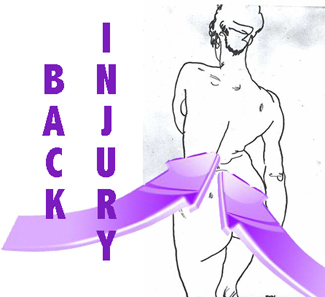 It is extremely easy to hurt the back doing the plank exercise, even though it is a wonderful technique if we have the abs for it. It’s whether or not they are strong enough to hold our entire body upon command. And that is what today’s exercise is about. Back Injury
It is extremely easy to hurt the back doing the plank exercise, even though it is a wonderful technique if we have the abs for it. It’s whether or not they are strong enough to hold our entire body upon command. And that is what today’s exercise is about. Back Injury Most of us want efficiency and want the shortest road toward what we consider perfection that we can take. That means we would like to bypass any frills and get right to the real work. Yet, some exercises, worldwide, put, at least, 50% fluff in them.
Most of us want efficiency and want the shortest road toward what we consider perfection that we can take. That means we would like to bypass any frills and get right to the real work. Yet, some exercises, worldwide, put, at least, 50% fluff in them.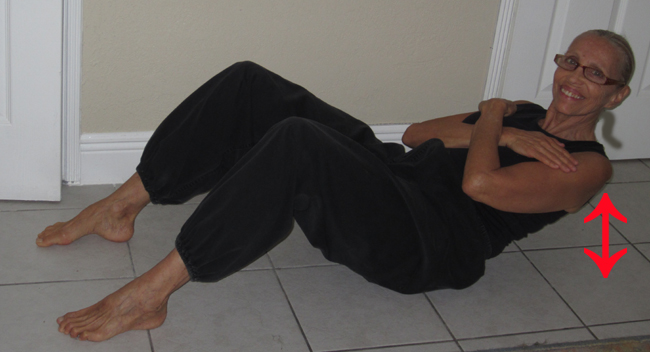
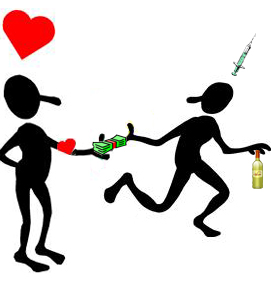 According to the dictionary, an enabler is a person who makes something possible. In the habit sense, it is a person who assists a habitual behaviorist to get her reward from some negative behavior.
According to the dictionary, an enabler is a person who makes something possible. In the habit sense, it is a person who assists a habitual behaviorist to get her reward from some negative behavior.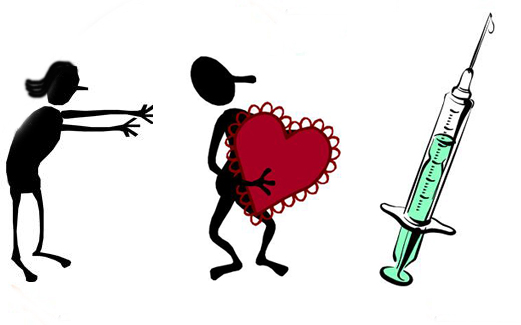
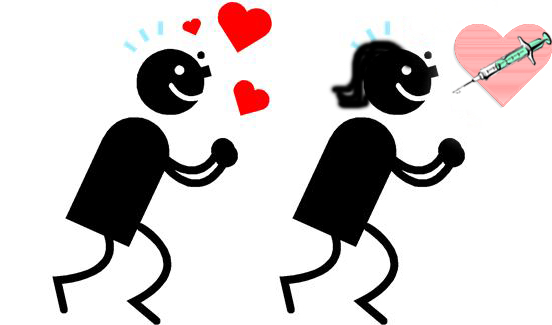
 In the same way that some cultures send a young person out to prove adulthood, we must allow our loved ones to fend for themselves or work on themselves, or they will never prove themselves to themselves. If we want to save ourselves, we must, in turn, remove the magnetic pull they have on us and let go, if we are to find our own way.
In the same way that some cultures send a young person out to prove adulthood, we must allow our loved ones to fend for themselves or work on themselves, or they will never prove themselves to themselves. If we want to save ourselves, we must, in turn, remove the magnetic pull they have on us and let go, if we are to find our own way.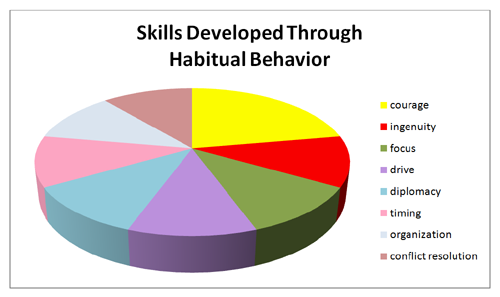
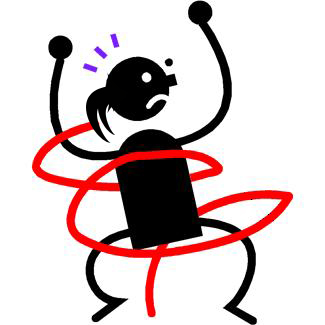 Let’s define habitual behavior as a pattern of action that follows an emotional and/or physical craving that leads to some type of internal intake or ingestion, tick, movement, series of actions, that takes place several times a day, once daily or several times a week, and that, when removed without replacement, causes psychic or physical reaction that can be severely painful. When we change the habit, we actively divert our own attention from the expectation of the old reward we couldn’t live without using the same skill set we created in developing the original habitual behavior; this is how we form a new one.
Let’s define habitual behavior as a pattern of action that follows an emotional and/or physical craving that leads to some type of internal intake or ingestion, tick, movement, series of actions, that takes place several times a day, once daily or several times a week, and that, when removed without replacement, causes psychic or physical reaction that can be severely painful. When we change the habit, we actively divert our own attention from the expectation of the old reward we couldn’t live without using the same skill set we created in developing the original habitual behavior; this is how we form a new one. we have ingenuity enough to have devised a way to live with our habitual behavior in our lives,
we have ingenuity enough to have devised a way to live with our habitual behavior in our lives,
 Most of the time, we develop habitual behavior because we experience grief, anger or limited self-esteem. These can come from abuse, crisis, death, sickness and whatever our mind conjures, since feelings are irrational and show up when they show up. Since we have a myriad of valuable skills from our habitual behavior, we are worthy, since worth is calculated by our collection of respectable, attention-getting skills.
Most of the time, we develop habitual behavior because we experience grief, anger or limited self-esteem. These can come from abuse, crisis, death, sickness and whatever our mind conjures, since feelings are irrational and show up when they show up. Since we have a myriad of valuable skills from our habitual behavior, we are worthy, since worth is calculated by our collection of respectable, attention-getting skills.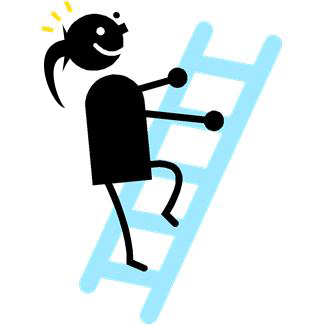

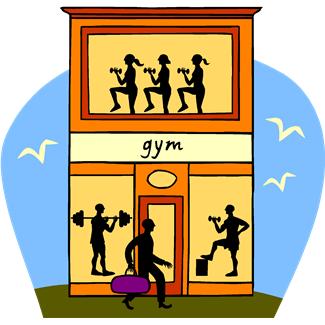 When thinking about social influence and habit change, I think of doing physical fitness like tai chi, going to the gym, going to a weight watch group, going to a rehab center. The function of each of these group activities is motivation of some kind. Let’s look at how the group motivates us.
When thinking about social influence and habit change, I think of doing physical fitness like tai chi, going to the gym, going to a weight watch group, going to a rehab center. The function of each of these group activities is motivation of some kind. Let’s look at how the group motivates us.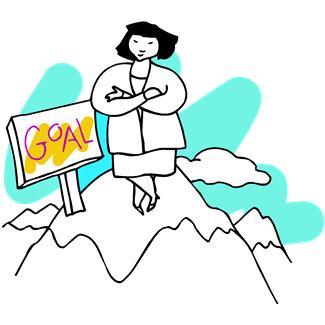 When we look at the amount of people who go back to their old habits after six months, a year, five years; it can be disheartening. There’s an interesting statistical article from 2004 about how treatment doesn’t work at:
When we look at the amount of people who go back to their old habits after six months, a year, five years; it can be disheartening. There’s an interesting statistical article from 2004 about how treatment doesn’t work at: People think tai chi is for exercise or defense, alone. It’s really for perception change. By doing a powerful exercise as tai chi is, we learn a systematic approach to movement. This system gives us tools to use in everyday life. As we acquire the patience to endure tremendous body exertion, we are learning a tool that works with anything in life. We have the understanding to know that the physical exertion and mental concentration needed to physically execute the movement is teaching us to follow through. And it is showing us we can do it.
People think tai chi is for exercise or defense, alone. It’s really for perception change. By doing a powerful exercise as tai chi is, we learn a systematic approach to movement. This system gives us tools to use in everyday life. As we acquire the patience to endure tremendous body exertion, we are learning a tool that works with anything in life. We have the understanding to know that the physical exertion and mental concentration needed to physically execute the movement is teaching us to follow through. And it is showing us we can do it. It’s the same if we surround ourselves with people who do not take drugs or drink or overeat or gamble. We will be more likely to accept behaving in a similar fashion, especially if they know we are working on habit change. If we keep repeating a new behavior in place of the old habit at the same time as building a personal foundation, we will succeed. And what’s missing at the start will no longer be missing. We will have developed, not only new behaviors, but a structure within ourselves that will sustain the way we wish to live.
It’s the same if we surround ourselves with people who do not take drugs or drink or overeat or gamble. We will be more likely to accept behaving in a similar fashion, especially if they know we are working on habit change. If we keep repeating a new behavior in place of the old habit at the same time as building a personal foundation, we will succeed. And what’s missing at the start will no longer be missing. We will have developed, not only new behaviors, but a structure within ourselves that will sustain the way we wish to live.
 When learning to change a habit, looking too far ahead is usually a deal breaker. If we are looking at the end result, meaning that we changed our habit; it may look vast, overwhelming, impossible, certainly difficult that it’s quitting time, quitting the process of change, that is.
When learning to change a habit, looking too far ahead is usually a deal breaker. If we are looking at the end result, meaning that we changed our habit; it may look vast, overwhelming, impossible, certainly difficult that it’s quitting time, quitting the process of change, that is.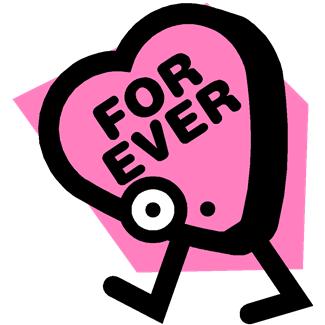 When we decide we will change a habit forever, we are locking ourselves in a prison. To give up an old behavior is not as difficult if we tell ourselves that we might be able to go back to it at some point in the future. It makes it easier to start, and it is not as scary a process. Change A Habit For Today, Not Forever
When we decide we will change a habit forever, we are locking ourselves in a prison. To give up an old behavior is not as difficult if we tell ourselves that we might be able to go back to it at some point in the future. It makes it easier to start, and it is not as scary a process. Change A Habit For Today, Not Forever How many times have we thought we had ourselves together, and we stopped behaving in the way that was working for us? We had changed our habit so long ago that we thought we could stop the technique that got us to change the habit?
How many times have we thought we had ourselves together, and we stopped behaving in the way that was working for us? We had changed our habit so long ago that we thought we could stop the technique that got us to change the habit?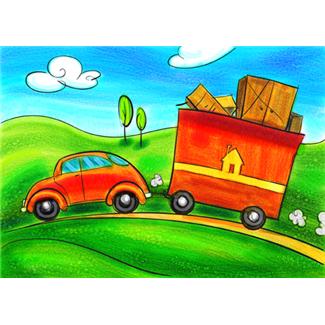
 Imagine a U.S. Senator whose family members all speak street language. She was the only member of the family to go to school. She was raised on “ain’t,” “anyways,” “nucular energy,” “athalete,” “asterik,” “supposubly,” “mischieveeous.” She goes to visit her original home for a week and her entire family speaks their normal street speak to her or with her. Then she comes back to D.C.
Imagine a U.S. Senator whose family members all speak street language. She was the only member of the family to go to school. She was raised on “ain’t,” “anyways,” “nucular energy,” “athalete,” “asterik,” “supposubly,” “mischieveeous.” She goes to visit her original home for a week and her entire family speaks their normal street speak to her or with her. Then she comes back to D.C.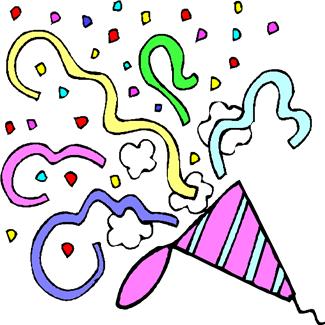 Once we have accomplished doing the new action and have a routine going that includes the new behavior, we can rejoice in the fact that we have begun to change the habit and that we had the power to start. If we forget to be joyful which includes acknowledging ourselves for changing, we are missing out on the joy that can sustain the new behavior.
Once we have accomplished doing the new action and have a routine going that includes the new behavior, we can rejoice in the fact that we have begun to change the habit and that we had the power to start. If we forget to be joyful which includes acknowledging ourselves for changing, we are missing out on the joy that can sustain the new behavior.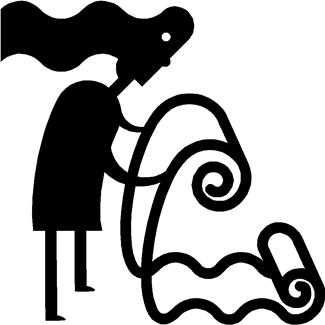
 Whatever our path to happiness, it is what drives us, floats our boat and encourages us to behave the way we do. Sometimes, it can be judged as superficial ego stroking; other times, it is seen as deep, genuine and benevolent. Whatever it is for us, we might be interested to know that our genes, and not just the social networks, can tell the difference.
Whatever our path to happiness, it is what drives us, floats our boat and encourages us to behave the way we do. Sometimes, it can be judged as superficial ego stroking; other times, it is seen as deep, genuine and benevolent. Whatever it is for us, we might be interested to know that our genes, and not just the social networks, can tell the difference. The study included 80 subjects who took a verbal survey, had their blood drawn and data compiled. It turns out that the study clearly indicated different gene expression profiles for those people whose happiness had to do with a goal or higher purpose and those whose happiness was connected with superficial pleasures and instant, short-lived gratification. According to an article in The New York Times on the study findings, Gretchen Reynolds wrote,
The study included 80 subjects who took a verbal survey, had their blood drawn and data compiled. It turns out that the study clearly indicated different gene expression profiles for those people whose happiness had to do with a goal or higher purpose and those whose happiness was connected with superficial pleasures and instant, short-lived gratification. According to an article in The New York Times on the study findings, Gretchen Reynolds wrote,
 It would serve all of us if we used the concepts in this study wisely. Whether we decided to run a store to give free sandwiches to the poor or we decide to work on our own physical fitness so that we can be a better and healthier family member; we would ultimately achieve that deeper happiness because our genes would tell the right proteins to fire so we would live longer and more healthily.
It would serve all of us if we used the concepts in this study wisely. Whether we decided to run a store to give free sandwiches to the poor or we decide to work on our own physical fitness so that we can be a better and healthier family member; we would ultimately achieve that deeper happiness because our genes would tell the right proteins to fire so we would live longer and more healthily.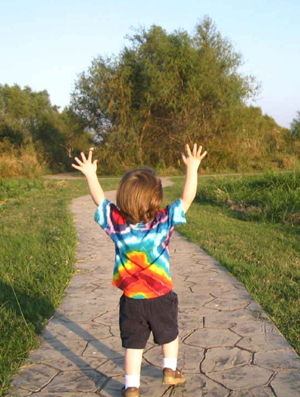
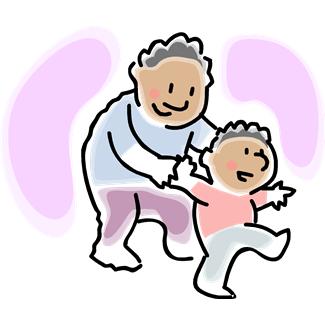 Both habits and mastery require many lessons. They are both learned behaviors that require extreme repetition. Habits are responses we cultivate as a reaction to a certain feeling, urge, itch, trigger, craving. With repetition, these responses become semi-automatic behaviors that become part of our infrastructure until we change them. Mastery is a state of prowess developed through repeating any skill set.
Both habits and mastery require many lessons. They are both learned behaviors that require extreme repetition. Habits are responses we cultivate as a reaction to a certain feeling, urge, itch, trigger, craving. With repetition, these responses become semi-automatic behaviors that become part of our infrastructure until we change them. Mastery is a state of prowess developed through repeating any skill set.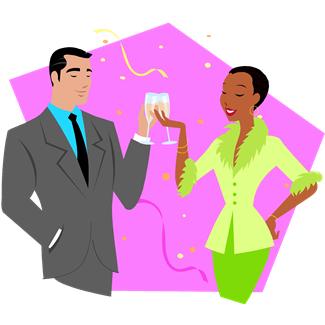 When we get the same urge over and over and do the same behavior to answer the urge, isn’t that actually mastering the management of that urge? In some cases, this “management” supports our positive life style. In others, the habit burdens us or diminishes our effective productivity.
When we get the same urge over and over and do the same behavior to answer the urge, isn’t that actually mastering the management of that urge? In some cases, this “management” supports our positive life style. In others, the habit burdens us or diminishes our effective productivity.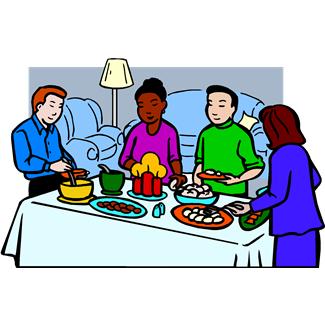
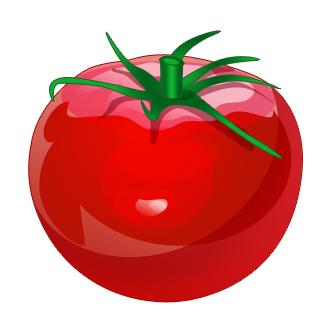
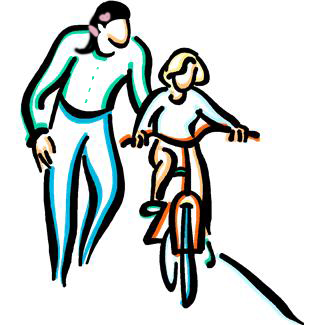 Whether we repeat our training, we learn, whether it’s riding a bike, learning to walk, learning to swim, answering our food urge mechanism by eating snack foods, answering our alcohol trigger by drinking to excess; we learn well how to immerse ourselves in the habit.
Whether we repeat our training, we learn, whether it’s riding a bike, learning to walk, learning to swim, answering our food urge mechanism by eating snack foods, answering our alcohol trigger by drinking to excess; we learn well how to immerse ourselves in the habit.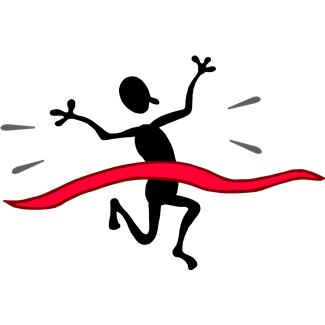 The skills used to develop a habit are focus, repetition and follow through. These are the skills needed to change a habit, too. Of course, passion is involved in the original learning and should one choose to make a change.
The skills used to develop a habit are focus, repetition and follow through. These are the skills needed to change a habit, too. Of course, passion is involved in the original learning and should one choose to make a change.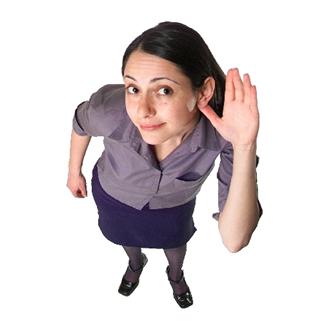 Hearing these words brought back a whole series of memories starting with a story my mother told me about her childhood. Now, I know that I have always been an explorer and that if a rule or tradition didn’t make sense to me, I always questioned it. I was encouraged to do so by both my parents.
Hearing these words brought back a whole series of memories starting with a story my mother told me about her childhood. Now, I know that I have always been an explorer and that if a rule or tradition didn’t make sense to me, I always questioned it. I was encouraged to do so by both my parents. So, let’s backtrack to when my mom was one-year-old. (This photo is not my mom. Because of her free spirit, I believe she would laugh if she saw this representation. This photo is used with lots of love and memories of nurturing.) She told me that she loved to see a plate break on the floor, that she would laugh with abandon at this phenomenon. Maybe it was the excitement of seeing the pieces scatter. It was a favorite activity, nonetheless. And my grandfather used to buy her plates so that she could knock them off her highchair so that she could laugh and be free. Yes, he was liberated, too.
So, let’s backtrack to when my mom was one-year-old. (This photo is not my mom. Because of her free spirit, I believe she would laugh if she saw this representation. This photo is used with lots of love and memories of nurturing.) She told me that she loved to see a plate break on the floor, that she would laugh with abandon at this phenomenon. Maybe it was the excitement of seeing the pieces scatter. It was a favorite activity, nonetheless. And my grandfather used to buy her plates so that she could knock them off her highchair so that she could laugh and be free. Yes, he was liberated, too. I did not throw plates, but I was encouraged to be my own person, ask questions about anything for the purpose of becoming a productive and liberated person. I can’t swear that my parents were thinking of the word “liberation” when they were raising me. They just saw no need to teach me to be seen and not heard as was and still is a popular method of child-rearing. Personally, I think this method can repress a child’s spirit and disable a child’s curiosity. Respect for elders and familial hierarchy can be taught in many ways, but free speech, in my opinion, should begin at the earliest of ages.
I did not throw plates, but I was encouraged to be my own person, ask questions about anything for the purpose of becoming a productive and liberated person. I can’t swear that my parents were thinking of the word “liberation” when they were raising me. They just saw no need to teach me to be seen and not heard as was and still is a popular method of child-rearing. Personally, I think this method can repress a child’s spirit and disable a child’s curiosity. Respect for elders and familial hierarchy can be taught in many ways, but free speech, in my opinion, should begin at the earliest of ages.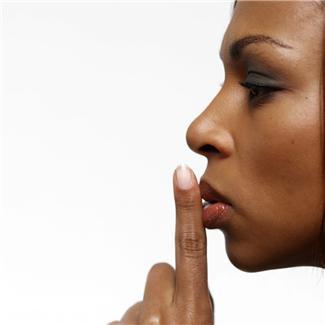 Let me clarify that many people raised in the “be seen and not heard” old-school philosophy are successful, happy, shining and wonderfully balanced. There are, however, many of us raised with restrictions every time we turn around, such as don’t speak unless we are asked a question, always be available as a servant to our parents, all friends must be researched for family stature and then brought to the house for approval; we are often stressed, repressed and depressed because of it. Certainly, we are rarely liberated and feel the pain of not being trusted.
Let me clarify that many people raised in the “be seen and not heard” old-school philosophy are successful, happy, shining and wonderfully balanced. There are, however, many of us raised with restrictions every time we turn around, such as don’t speak unless we are asked a question, always be available as a servant to our parents, all friends must be researched for family stature and then brought to the house for approval; we are often stressed, repressed and depressed because of it. Certainly, we are rarely liberated and feel the pain of not being trusted. 2) We don’t speak up due to our self-image. This usually has to do with the fact that we are younger, older, the minority sex in the group, the wrong sexual orientation, a woman whose place (in in someone else’s mind) is in the home, the wrong nationality, religion or socio-economic level.
2) We don’t speak up due to our self-image. This usually has to do with the fact that we are younger, older, the minority sex in the group, the wrong sexual orientation, a woman whose place (in in someone else’s mind) is in the home, the wrong nationality, religion or socio-economic level. 2)
2)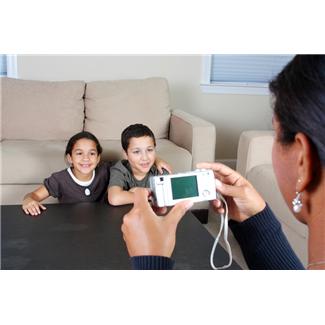
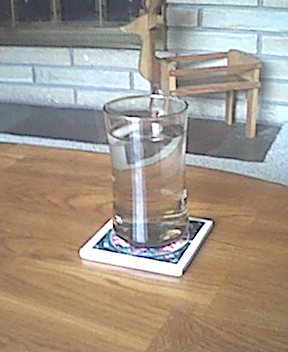 Water works on habit change. It has a profound influence on whatever we are doing. If we are working on changing a habit, we need it. If we are thirsty, the body is already deprived, but it hydrates us. Water flushes out toxins; it balances the chemicals that make us human; it combines with the nutrients from our food. It keeps our health.
Water works on habit change. It has a profound influence on whatever we are doing. If we are working on changing a habit, we need it. If we are thirsty, the body is already deprived, but it hydrates us. Water flushes out toxins; it balances the chemicals that make us human; it combines with the nutrients from our food. It keeps our health.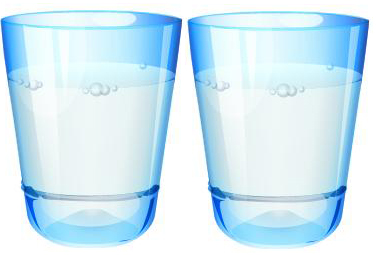 Before sitting down to eat (or even if we eat standing up), pour two glasses of water for ourselves. Before we allow ourselves to take a bite to eat, we drink all the water. We do this at every meal, including snacks.
Before sitting down to eat (or even if we eat standing up), pour two glasses of water for ourselves. Before we allow ourselves to take a bite to eat, we drink all the water. We do this at every meal, including snacks. We can think of the beautiful water supply from which it came, if it is clean water and conjure a picture of wonderful waterfalls surrounding it. Secondly, we can honor those who do not have clean water or any water at all by being grateful for the water in front of us. This mental exercise helps insure the water is drunk with no excuses.
We can think of the beautiful water supply from which it came, if it is clean water and conjure a picture of wonderful waterfalls surrounding it. Secondly, we can honor those who do not have clean water or any water at all by being grateful for the water in front of us. This mental exercise helps insure the water is drunk with no excuses.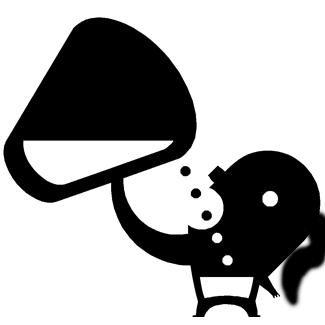
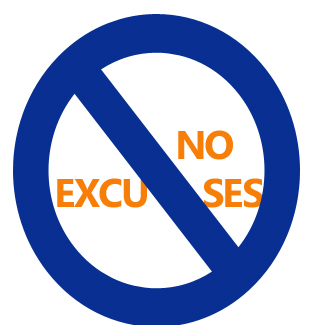 1) It’s not always convenient to stop and get water.
1) It’s not always convenient to stop and get water.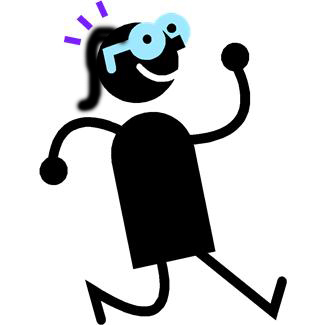 3)
3)





